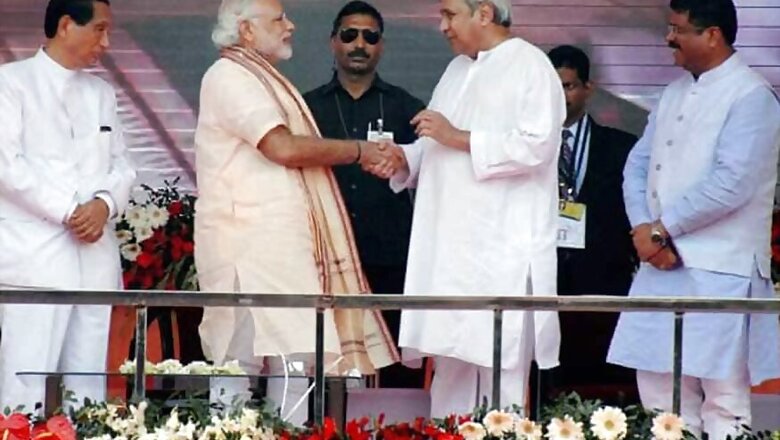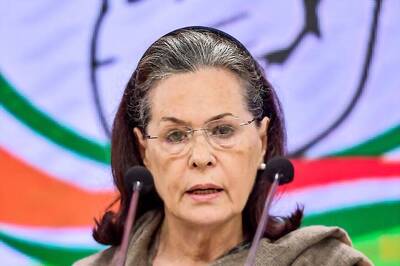
views
All of coastal Odisha is reeling under the trail of devastation caused by cyclone Fani that hit the state on May 3.
So much so, the modern capital city of Bhubaneswar has remained under a state of siege for many days with no electricity and water supply.
The city ran on diesel generators. Fani triggered a mini exodus. Bhubaneswar’s bus and railway stations witnessed massive rush as many fled the city to escape harsh living conditions.
In living memory, never before Bhubaneswar had suffered as much.
The situation in the temple town Puri is even worse. It became a living hell for a large number of people in coastal districts.
While the Naveen Patnaik government has done a commendable job in minimising death toll (the United Nations has lauded the state government’s efforts) to 64 by evacuating a million people into safety, it escaped scrutiny for its patchy rebuilding efforts in inaccessible areas as the national media largely chose to ignore the calamity (one TV editor said Odisha has no TRP).
However, electorally speaking, as both the state and general elections got over on April 29, just three days before the cyclone hit Odisha’s coast, there is no chance of the hardship people facing in the aftermath of Fani having any kind of impact on the poll prospects of the Patnaik-led Biju Janata Dal.
It was the 1999 Odisha super cyclone that had killed over 10,000 people and had wiped out the then Congress government and brought Patnaik’s newly formed BJD into power. Since then Patnaik has been ruling the state uninterrupted for the past 19 years.
The Congress in Odisha is still struggling to rise from the ashes and has even conceded the second spot to a resurgent BJP.
This time there is much talk about the BJP, powered by Prime Minister Narendra Modi’s immense popularity, having made strong inroads in Odisha and neighbouring West Bengal and this is where the saffron party aims to cover up a possible seat shortfall in the Hindi heartland.
Many travelling journalists, opinion polls included, have come back with ground reports that while Patnaik is poised to win an envious fifth term, the same cannot be said about his Lok Sabha score card and the BJP may well go on to win nine to 12 of the total 21 Lok Sabha seats in the state.
Also, there is a great deal of talk on “double voting” in both the state and national media — many have voted differently this time, i.e., for the BJD in the Assembly election and for the saffron party in the parliamentary polls.
Is double voting possible? Has this ever happened in Odisha?
In 2009, the BJD had won 103 Assembly and 14 Lok Sabha seats, while the Congress had contributed six Lok Sabha constituencies to the UPA-II government.
In 2014, the BJD regained its lost ground and swept 20 Lok Sabha seats leaving just one to the BJP, as the grand old party drew a blank.
The difference in BJD’s vote share between Lok Sabha (44.1%) and assembly polls (43.4%) was about 0.7% in 2014.
A jump of 6% vote share in favour of the BJD as against 2009 saw Patnaik romp home with a massive mandate of 117 assembly seats.
The Congress, despite getting 26% vote share, could not win a single Lok Sabha seat, while the BJP managed to win a seat even though it had only 18% vote share.
If one looks closely at the 2009 Odisha results, the BJD couldn’t do as well in Lok Sabha as in the Assembly (103 MLAs with 38.86% vote share to 14 MPs with 37.23% vote share), indicating that people have voted differently, but not as differently to throw up any big surprises.
But in a close contest, a little jump in vote share can make significant change in the final outcome.
And that seems to be the big worry in 2019 for Naveenbabu.
Apparently, in several Assembly seats, the BJD is said to be locked in close contests.
In this election, the BJP launched its fiercest campaign yet in Odisha, clearing its own confusion whether to attack Patnaik in case his support would be needed in a post-poll scenario.
But closer to polls, the state BJP campaign, led by Union minister Dharmendra Pradhan, went all out to attack.
The BJD clearly sensed the danger signal and Naveenbabu undertook extensive bus tours across the state on campaign trail.
Patnaik, too, didn’t spare Modi, and said the latter didn’t deserve a second term. Towards the end of the campaign, both sides appeared desperate.
Two instances revealed that desperation.
To quell rumours about his health condition, the CM’s office released a rather awkward video of Patnaik’s fitness regimen, reinforcing he’s in fine fettle, and the BJP going on to announce rice, dal and salt for Re 1 as a match-up to BJD’s populist scheme.
On the BJD’s part, its initial campaign theme, which started on a confidant note — “21 ru 21 shankha” (21 out of 21 conch, the BJD symbol) and the party would play a key role at the Centre — had made way for taking on the BJP, asking the Central leadership “where were you” when Odisha was hit by cyclones Hudhud and Titli.
Patnaik did not stop at that and took potshots at his one-time confidant Kendrapda MP Baijayant Panda, who had crossed over to the BJP just before the elections.
He also addressed people in broken Odia to prove to his opponents that he knew how to speak the native language.
Inarguably, Patnaik is the most popular leader in the state and there is no such anger against him as incumbents face.
So, what changed in three months’ time leading up to the simultaneous elections when Patnaik still looked invincible?
One BJD MP says it is anti-incumbency and not as much the BJP fightback.
Also, apparently, Patnaik’s masterstroke, the Kalia welfare scheme for farmers, has caused a lot of heartburn among people who didn’t receive the first instalment.
The BJD started blaming the BJP for stalling the payments. The BJP has surely done well in cashing in on these loopholes.
Some key BJD leaders who didn’t get party tickets quickly switched over to the opposition camp.
Modi’s ever-rising popularity and his fabled decisive leadership has definitely caught up the imagination of urban voters, and thanks to WhatsApp, PM’s speeches are instantly available for rural folks to take note of.
No matter what the outcome, Odisha elections have never been this tantalisingly close and the poll battle so intense.
Former BJD MP Tathagata Satpathy compares Odisha’s voting pattern this time to what had happened in 1977, indicating it could be an anti-establishment vote.
“There was complete voter silence after the polling and no way one could figure out what would be the outcome.”
Also not clear if the Congress vote that has shifted to BJP in great measure.
Will 2019 Odisha Lok Sabha results be similar to 2009, or has the ‘Modi-wave’ swept the state?
Has the BJP done a Tripura by breaching one of its last frontiers?
If it’s a Right turn, then it’s nothing short of a tectonic shift in Odisha’s political landscape.
And a victory for the BJD would mean Patnaik remains the Kalinga samrat at least till 2024.
For a clear picture, one has to wait till the last vote is counted in Odisha on May 23.


















Comments
0 comment